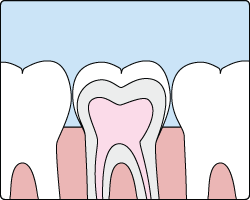
When it comes to those hard to reach spots, those spaces where the popcorn love to store themselves for later, brushing just isn’t enough. It’s a veritable breeding ground for tooth decay in there, but it doesn’t have to be. We may recommend the use of sealants on your child’s teeth, to give them just a little added protection against decay, and to prevent cavities.
Who should consider dental sealants? Primarily, children and teenagers are ideal candidates, but even adults who have healthy molars without decay or fillings can reap the benefits of this treatment. Essentially, anyone susceptible to tooth decay in their back teeth should contemplate sealants. For children, it’s recommended to apply sealants on their permanent molars and premolars as soon as they erupt, safeguarding their teeth during the cavity-prone years (typically ages 6 through 14).
What are dental sealants and how do they work?
Sealants are made of plastic resin and applied to, bond, and harden in the deep grooves of the surface of your child’s teeth. When sealants are used, the toothbrushing process becomes easier and more effective. Pediatric dental sealants are typically applied to a child’s permanent teeth as a preventive measure designed to prevent tooth decay, and will last three to five years (though it’s not uncommon to see adults with their childhood sealants still intact).
How common are sealants?
Sealants are one of the most common preventive dentistry treatments performed today. In the U.S., approximately 42% of children aged 6 to 11 and 48% of adolescents aged 12 to 19 have dental sealants on their adult (permanent) teeth.
Have one or more of your child’s sealants come off?
Dental sealants are only useful when fully intact, so if you suspect one of your child’s sealants has come off, contact Smilez Pediatric Dental Group today for an appointment to have her teeth resealed.

